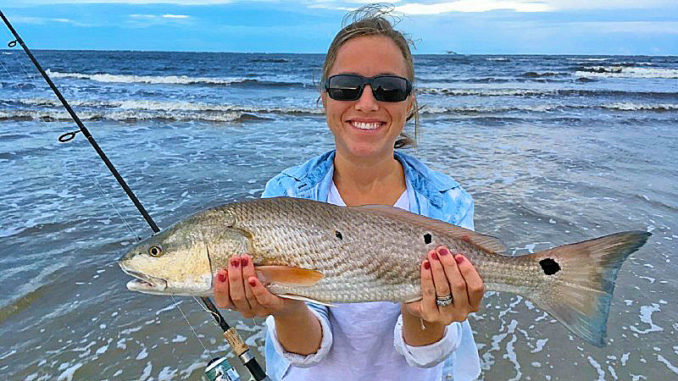
Fish the tides for summer Swansboro redfish
Unlike many of North Carolina’s coastal fish, redfish remain in shallow, inside waters during August’s heat.
The reason isn’t difficult to figure — baitfish and crabs are concentrated in skinny waters.
Tidal changes also concentrate redfish. That’s because falling and rising water that flows around marsh islands and through creeks and inlets push baitfish right past the noses of redfish.
Guide David Towler of Swansboro’s Towler Time Charters can find summer reds.
“The best thing about fishing for drum is you need to fish high and low tides,” said Towler (910-554-4742). “That’s when it’s coolest, and bites change.”
Towler gets some guide trips from fly fishermen, but most anglers like catching redfish with artificial lures or live baits cast with spinning outfits.
“Baitfish, especially finger mullet, push up into the grass on rising tides and get pulled out when it falls,” said Towler. “I look for mullet schools. By August, baits have gotten big so I use 5- to 5 ½-inch finger mullets.”
Explosive topwater bites are common during early morning hours. Towler likes his clients to throw MirrOlure Top Dogs, She Dogs or Top Dog Jrs.
“If the water’s clear, I prefer natural colors,” Towler said. “If it’s stained, She Dogs have a higher-pitched rattle and seem to draw more strikes. In dirty water I like a full-size, 5- to 5 1/2-inch model”
Live bait is also a good choice
Towler also fishes popping corks trailing live mullet — never artificials — along marsh edges.
“If I’m fishing smooth bottoms, sometimes I get my clients to cast jigheads with soft-plastic swimbaits or twitch baits,” he said.
At mid-tide (falling or rising), he looks for skinny creeks near marsh-grass edges that also feature oyster rocks. The corners of these small creeks with oysters nearby are gathering spots for redfish schools.
“That’s when I throw a lure with a weighted, bass angler’s hook,” Towler said. “I like the slow fall you get with a weighted worm hook (and twitch bait).”
At low tide, he’ll find any deep, moving water, cast a soft-plastic lure with a 1/3- to ¾-ounce weight and hop it across the bottom.
“I always throw upcurrent and retrieve a lure with the flow so it’ll look natural,” Towler said. “Baitfish swim with the flow.”
Tackle uses 7-foot, medium-action rods mated to 2500 to 3000 series spinning reels spooled with 15-pound braid and a 2-foot leader of 25-pound fluorocarbon.
“I don’t use braid at oyster rocks,” he said. “Braid will tangle and wrap up in coon oysters, and oyster shells will cut it. Heavier monofilament or fluorocarbon works better around oyster beds.”
Towler said a typical 3- to 4-hour morning trip in August often yields six to 10 reds from 22 to 30 inches long. Anglers may keep one per day between 18 and 27 inches.




Be the first to comment